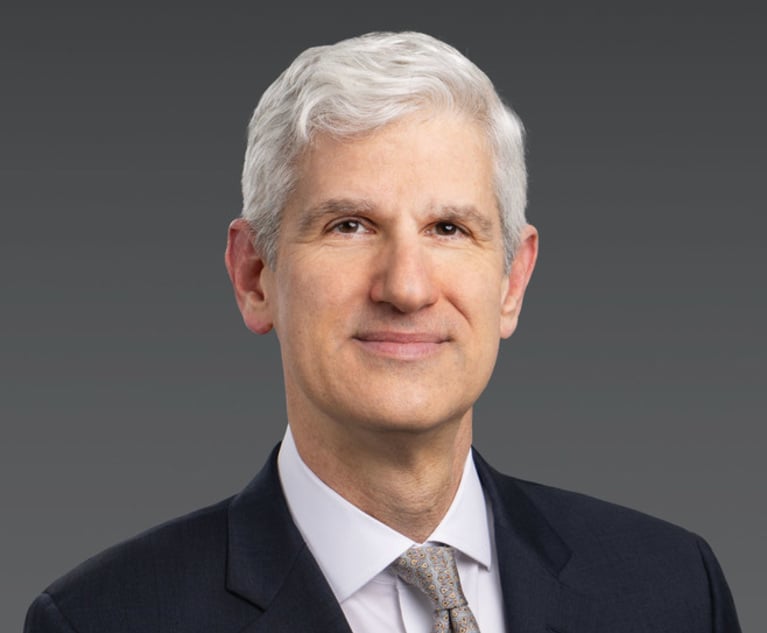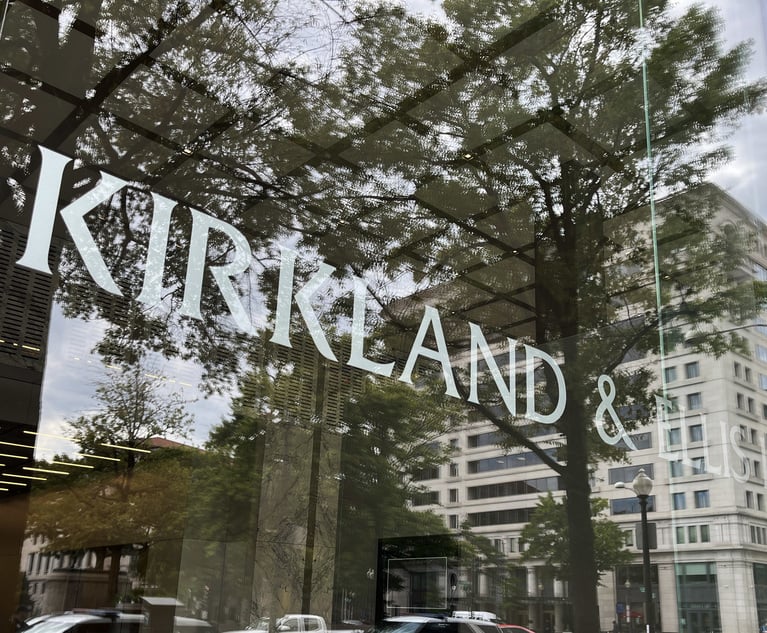Don't Expect Flood of Filings Following Burford's Bid for Stock Exchange Presence
Different litigation financiers use different business models, experts say, which is why you shouldn't expect a wave of privately owned funds rushing to get on a U.S. stock exchange.
July 10, 2020 at 01:50 PM
4 minute read
 The New York Stock Exchange in New York on June 17, 2020. Photo: Michael Nagle/Bloomberg
The New York Stock Exchange in New York on June 17, 2020. Photo: Michael Nagle/Bloomberg
Litigation funding giant Burford Capital might have dreams of being traded on the New York Stock Exchange, but don't expect other litigation financiers rushing to follow them.
Burford on Tuesday announced it had filed paperwork with the U.S. Securities and Exchange Commission in order to be listed on a U.S. stock exchange. What happens next, according to the firm, is a confidential review that'll take months to play out.
Getting listed on a U.S. stock exchange would grant Burford more access to capital as well as different sources of it, said William Farrell, the managing director and general counsel of Longford Capital Management, a Chicago-based litigation financier that competes with Burford.
Despite this, don't expect Longford and others to follow in Burford's footsteps, Farrell said. That's because Longford and Burford are using different models to raise money, he added.
"We are not considering going public and listing on the New York Stock Exchange," Farrell said. "We like the private model and we think there's advantages to that."
If it is traded on a U.S. stock exchange, Burford will be able to tap into a new cohort of investors who never would have backed the litigation financier if it wasn't for the stock exchange, Farrell said. However, Burford might also face pressure to post good results every quarter, which is something a private company like Longford doesn't need to worry about, Farrell added.
Burford's announcement "caused us to consider the advantages and disadvantages, and reaffirmed our preference to being a private model, being privately owned," Farrell said.
The firm's possible ascendancy to a U.S. stock exchange is a welcome development for the litigation-financing industry as a whole, said Charles Agee, the chief executive officer of Westfleet Advisors, which advises companies and law firms that are interested in obtaining litigation funding.
Having the largest litigation financier in the world become a publicly traded company on the New York Stock Exchange would serve as "validation" for the industry, Agee said. However, he doubted that Burford's application to the SEC would be the start of a trend because there are different litigation-financing models in play.
Farrell noted that Burford was already a publicly listed company—its stocks are already trading on the London AIM, which is a submarket of the London Stock Exchange. Burford's announcement comes six months after it first teased the possibility of getting on the New York Stock Exchange or the NASDAQ for its ordinary shares to be traded.
Farrell said the differences in the public and private models of litigation financing are not apparent to its customers.
"I would imagine that the customers, our users, really don't know or care that much about our corporate form of structure," Farrell said.
Burford, which is being represented by attorneys from Cravath, Swaine & Moore, declined to comment for this article.
Burford saw its revenue drop by 15% and its operating profits plummet by 21% in 2019. But in an interview with The American Lawyer, Burford's CEO touted the fact that it deployed over $1 billion for the third straight year, and was looking to take advantage of the economic chaos being caused by the ongoing COVID-19 pandemic.
"We have significant cash on hand in addition to our proven cash generating capacity and access to hundreds of millions of dollars of fund capital to boot," Burford CEO Christopher Bogart said in an April 28 statement. "And much as we share the world's distress at our current health crisis, the reality is that we expect its aftermath to be a time of significant demand for our services and a moment when uncorrelated cash flows are especially attractive."
Read More
After Declines, Burford CEO Points to Busy 2020, Cites COVID-19 Claims Ahead
Law Firms Flock to Litigation Funders Amid COVID-19 Outbreak
Burford Touts Management Moves, Potential NY Listing and End to Investor Class Action
This content has been archived. It is available through our partners, LexisNexis® and Bloomberg Law.
To view this content, please continue to their sites.
Not a Lexis Subscriber?
Subscribe Now
Not a Bloomberg Law Subscriber?
Subscribe Now
NOT FOR REPRINT
© 2025 ALM Global, LLC, All Rights Reserved. Request academic re-use from www.copyright.com. All other uses, submit a request to [email protected]. For more information visit Asset & Logo Licensing.
You Might Like
View All
Paul Hastings, Recruiting From Davis Polk, Adds Capital Markets Attorney
3 minute read
Kirkland Is Entering a New Market. Will Its Rates Get a Warm Welcome?
5 minute read

Goodwin Procter Relocates to Renewable-Powered Office in San Francisco’s Financial District
Law Firms Mentioned
Trending Stories
Who Got The Work
J. Brugh Lower of Gibbons has entered an appearance for industrial equipment supplier Devco Corporation in a pending trademark infringement lawsuit. The suit, accusing the defendant of selling knock-off Graco products, was filed Dec. 18 in New Jersey District Court by Rivkin Radler on behalf of Graco Inc. and Graco Minnesota. The case, assigned to U.S. District Judge Zahid N. Quraishi, is 3:24-cv-11294, Graco Inc. et al v. Devco Corporation.
Who Got The Work
Rebecca Maller-Stein and Kent A. Yalowitz of Arnold & Porter Kaye Scholer have entered their appearances for Hanaco Venture Capital and its executives, Lior Prosor and David Frankel, in a pending securities lawsuit. The action, filed on Dec. 24 in New York Southern District Court by Zell, Aron & Co. on behalf of Goldeneye Advisors, accuses the defendants of negligently and fraudulently managing the plaintiff's $1 million investment. The case, assigned to U.S. District Judge Vernon S. Broderick, is 1:24-cv-09918, Goldeneye Advisors, LLC v. Hanaco Venture Capital, Ltd. et al.
Who Got The Work
Attorneys from A&O Shearman has stepped in as defense counsel for Toronto-Dominion Bank and other defendants in a pending securities class action. The suit, filed Dec. 11 in New York Southern District Court by Bleichmar Fonti & Auld, accuses the defendants of concealing the bank's 'pervasive' deficiencies in regards to its compliance with the Bank Secrecy Act and the quality of its anti-money laundering controls. The case, assigned to U.S. District Judge Arun Subramanian, is 1:24-cv-09445, Gonzalez v. The Toronto-Dominion Bank et al.
Who Got The Work
Crown Castle International, a Pennsylvania company providing shared communications infrastructure, has turned to Luke D. Wolf of Gordon Rees Scully Mansukhani to fend off a pending breach-of-contract lawsuit. The court action, filed Nov. 25 in Michigan Eastern District Court by Hooper Hathaway PC on behalf of The Town Residences LLC, accuses Crown Castle of failing to transfer approximately $30,000 in utility payments from T-Mobile in breach of a roof-top lease and assignment agreement. The case, assigned to U.S. District Judge Susan K. Declercq, is 2:24-cv-13131, The Town Residences LLC v. T-Mobile US, Inc. et al.
Who Got The Work
Wilfred P. Coronato and Daniel M. Schwartz of McCarter & English have stepped in as defense counsel to Electrolux Home Products Inc. in a pending product liability lawsuit. The court action, filed Nov. 26 in New York Eastern District Court by Poulos Lopiccolo PC and Nagel Rice LLP on behalf of David Stern, alleges that the defendant's refrigerators’ drawers and shelving repeatedly break and fall apart within months after purchase. The case, assigned to U.S. District Judge Joan M. Azrack, is 2:24-cv-08204, Stern v. Electrolux Home Products, Inc.
Featured Firms
Law Offices of Gary Martin Hays & Associates, P.C.
(470) 294-1674
Law Offices of Mark E. Salomone
(857) 444-6468
Smith & Hassler
(713) 739-1250










